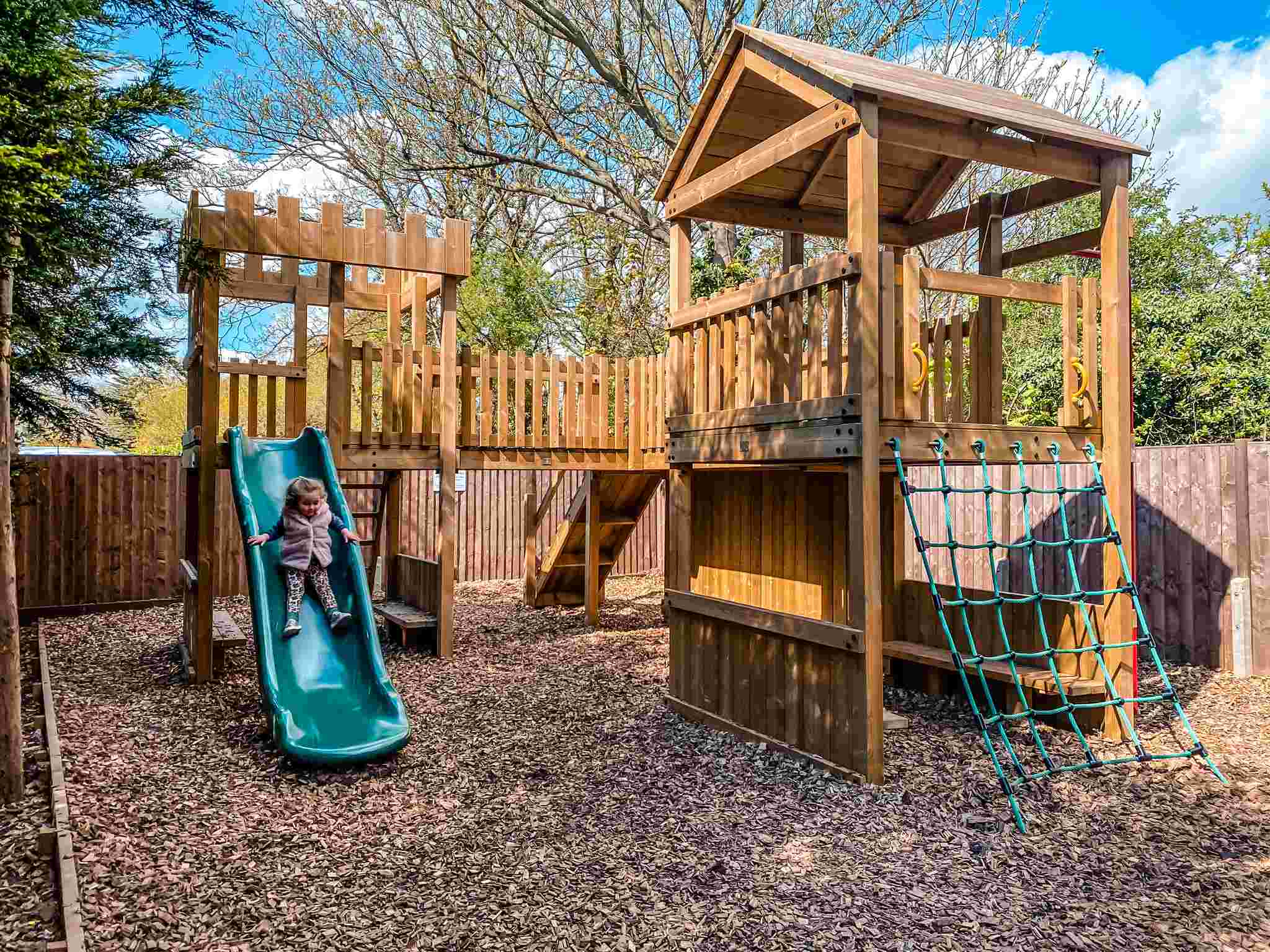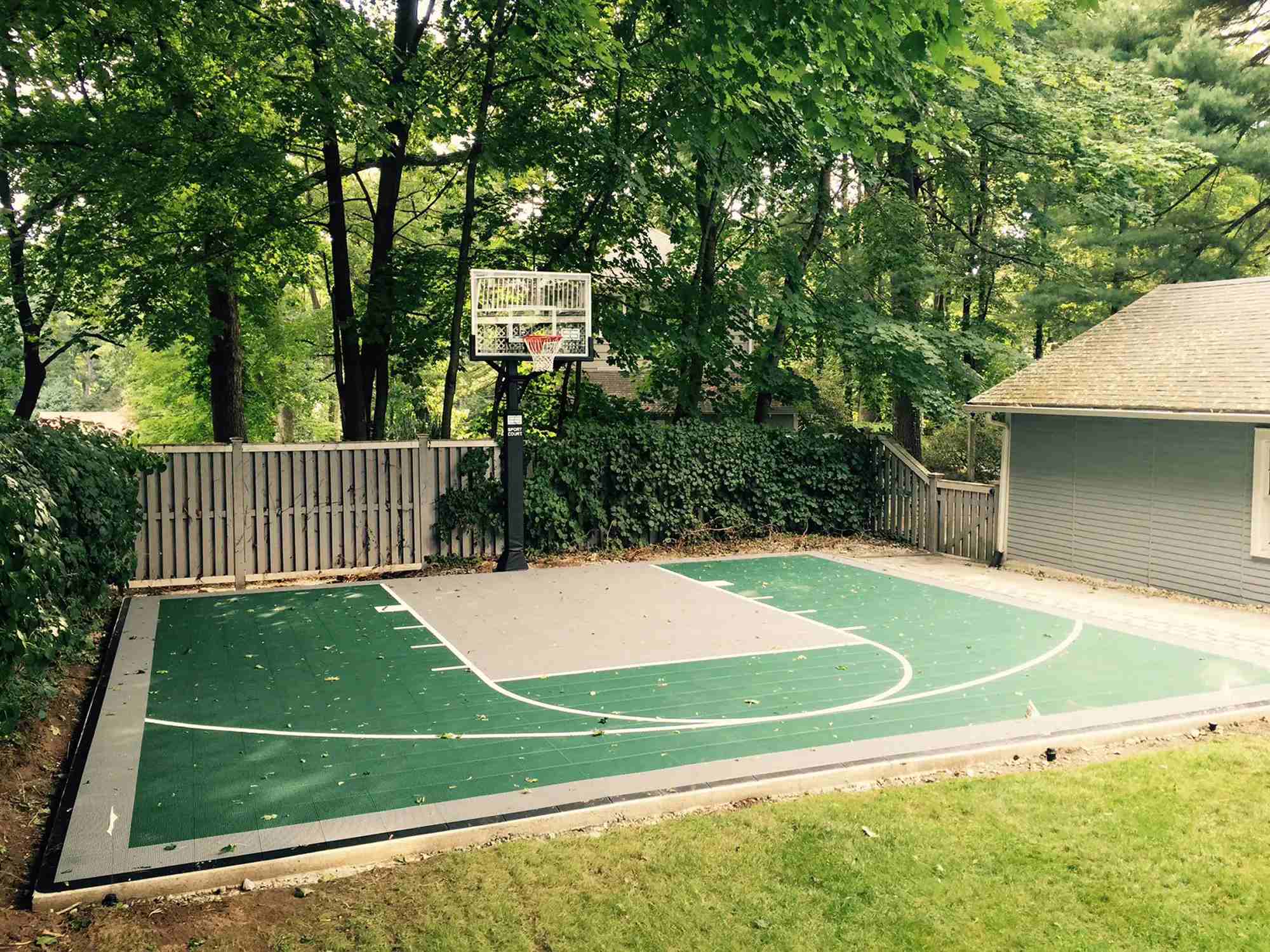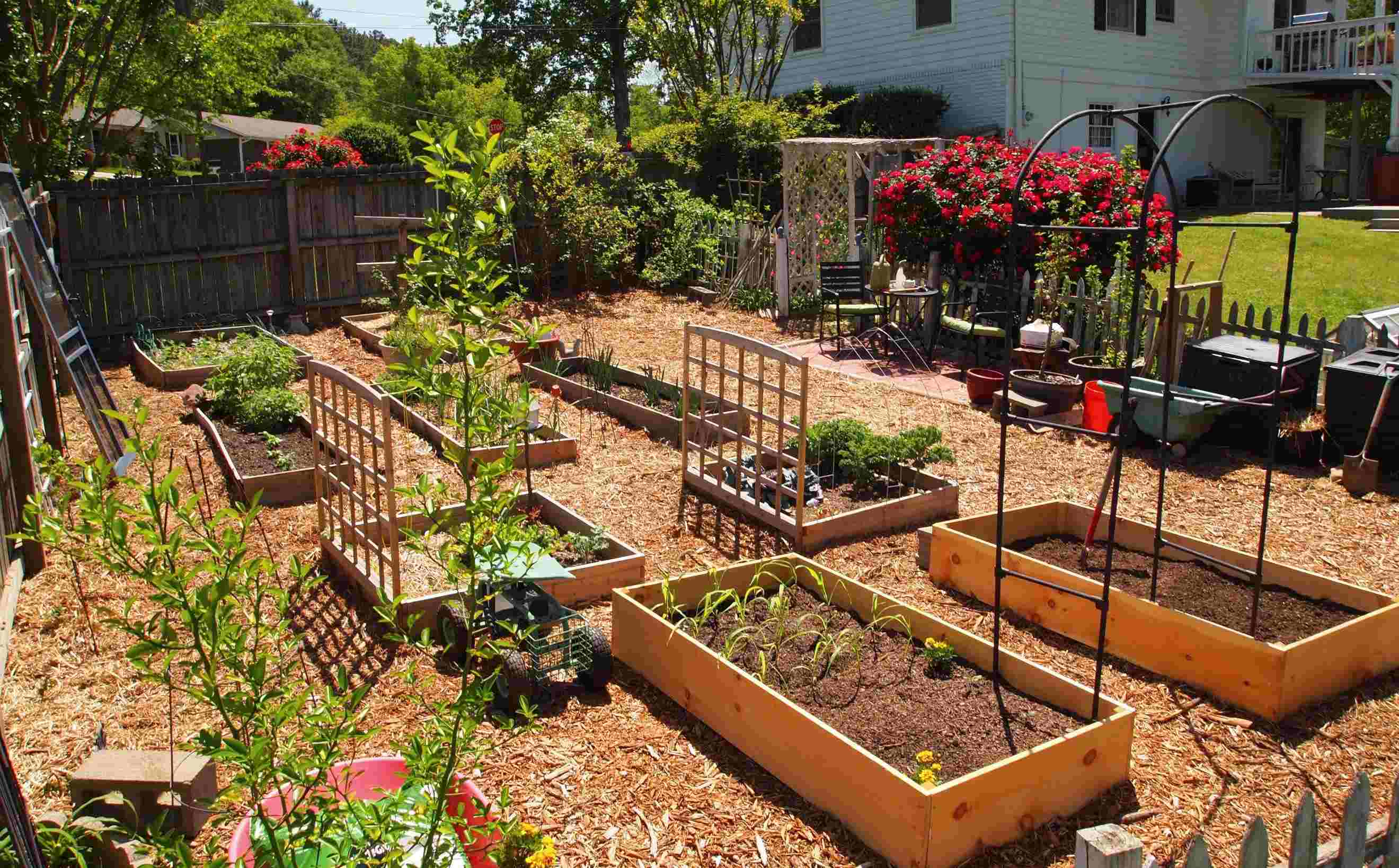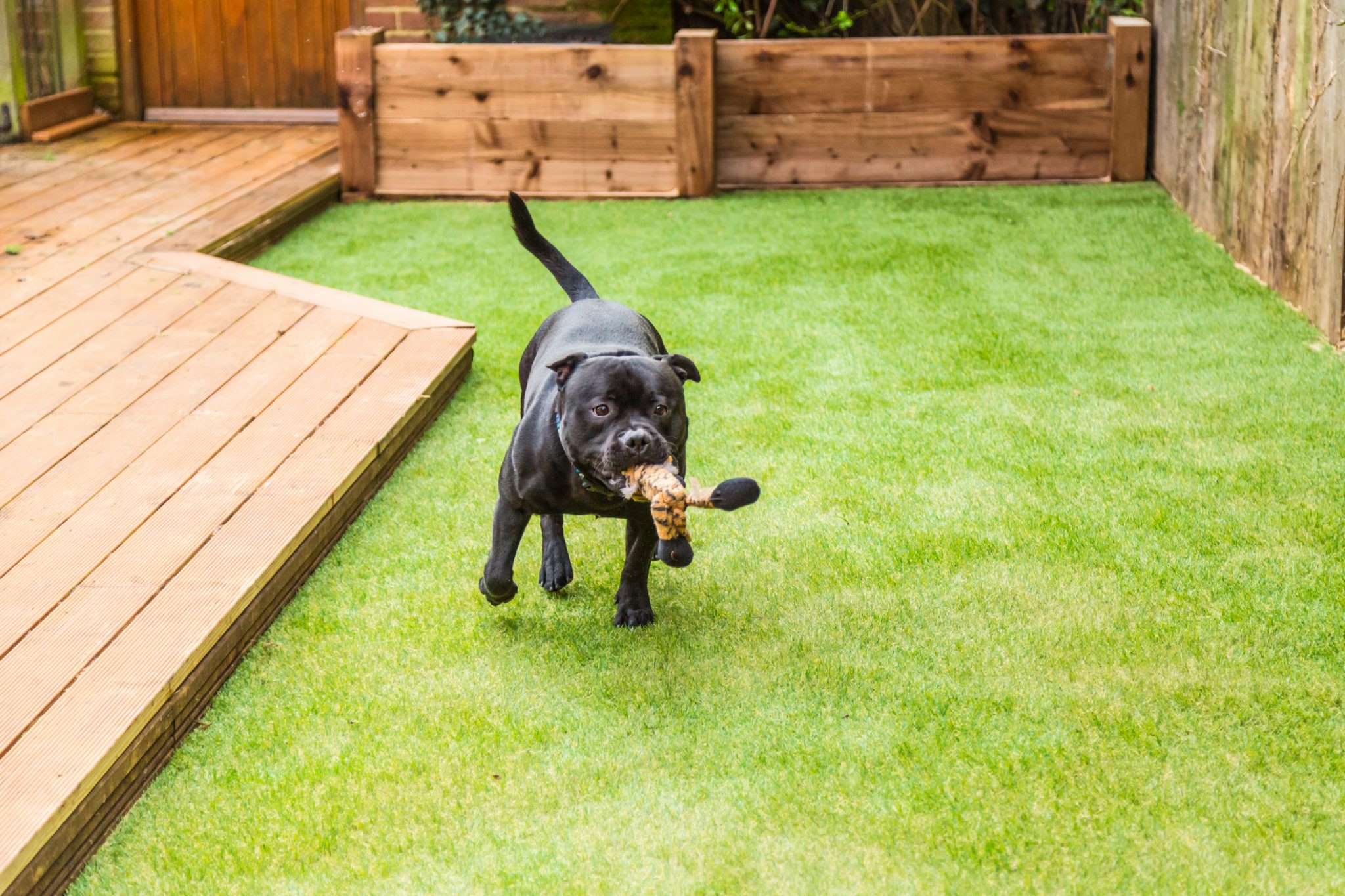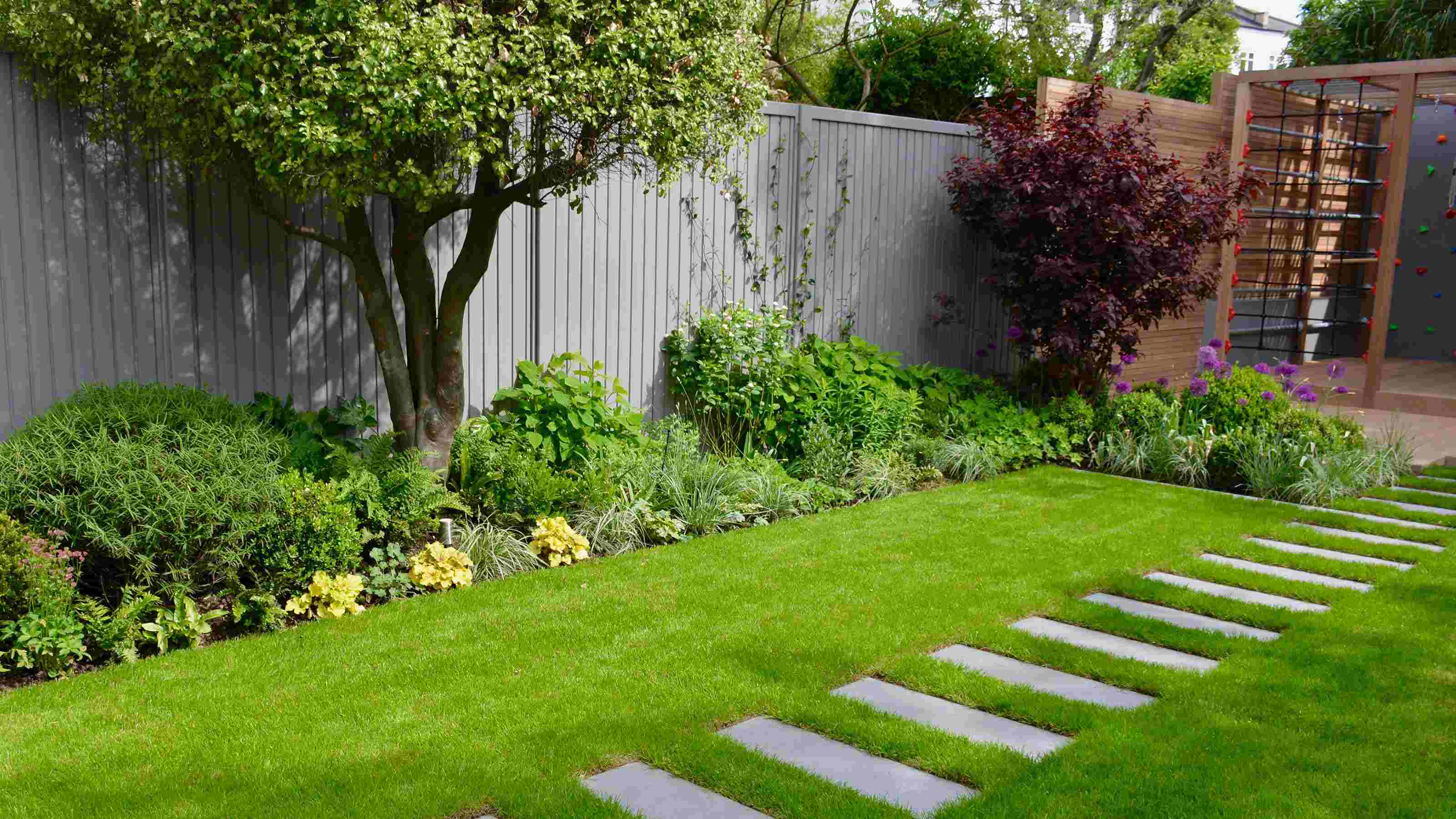Home>Gardening Tips and Tricks>How To Make Backyard Smell Better
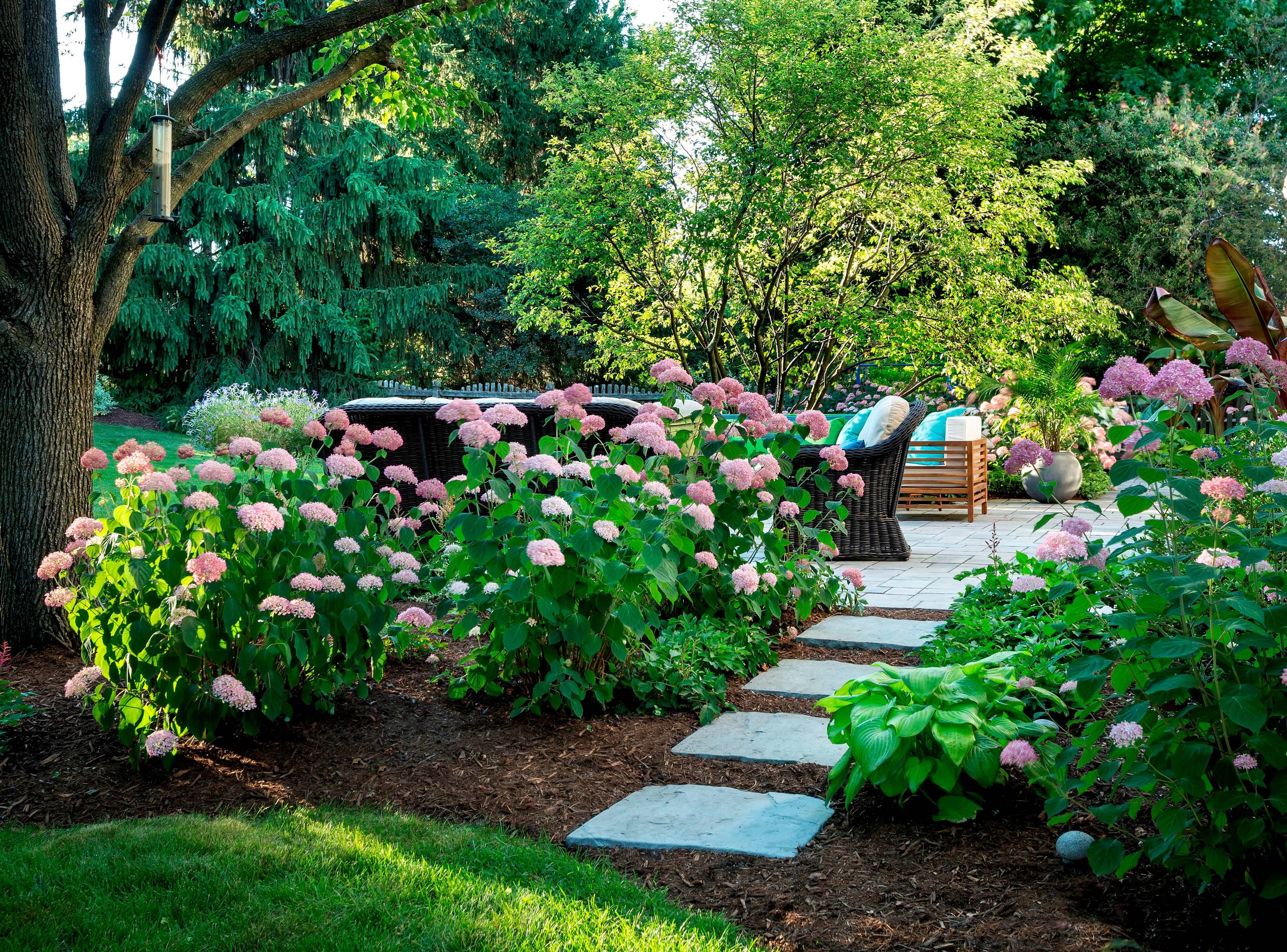

Gardening Tips and Tricks
How To Make Backyard Smell Better
Modified: January 22, 2024
Learn effective problem-solving strategies to make your backyard smell better. Discover tips and techniques to eliminate odors and create a fresh and inviting outdoor space.
(Many of the links in this article redirect to a specific reviewed product. Your purchase of these products through affiliate links helps to generate commission for Chicagolandgardening.com, at no extra cost. Learn more)
Table of Contents
Introduction
Welcome to your backyard oasis! Whether you have a small garden or a sprawling lawn, your backyard is a place where you can relax, unwind, and enjoy the beauty of nature. However, unpleasant odors can quickly spoil the tranquility and make spending time in your outdoor space less enjoyable. To make your backyard a place that smells as good as it looks, we have compiled a list of tips and tricks to eliminate bad odors and keep your outdoor space smelling fresh and inviting.
From funky pet odors to the lingering smell of garbage, various factors can contribute to unpleasant smells in your backyard. Identifying the source of the odor is the first step in finding an effective solution. By addressing the root cause, you can ensure a long-term solution and prevent the odor from returning.
Once you have identified the source of the odor, it’s time to take action. One common culprit is pet waste. Cleaning up after your furry friends is essential not only for hygiene but also to eliminate strong odors. Make it a habit to regularly scoop the poop and dispose of it properly.
Garbage and waste also contribute to a foul-smelling backyard. Ensure that you have a proper garbage disposal system in place to prevent odors from permeating the air. Secure garbage cans with a tight lid and schedule regular trash pickups to maintain a fresh-smelling outdoor space.
In addition to addressing the source of the smell, introducing natural air fresheners can help to mask odors and create a pleasant atmosphere. Essential oils, scented candles, and potpourri are all excellent options for adding a delightful fragrance to your backyard.
Another way to enhance the aroma in your backyard is by planting fragrant flowers and herbs. Plants like lavender, jasmine, and roses not only add beauty but also release enchanting scents into the air. Consider creating a dedicated area for these plants to amplify the delightful fragrances and create a peaceful retreat.
Creating a compost bin can also help eliminate bad odors in your backyard. By composting kitchen scraps and garden waste, you can transform organic matter into nutrient-rich soil. This not only reduces the amount of waste going to landfills but also helps to mitigate unpleasant smells associated with decaying organic material.
Maintaining cleanliness and tidiness in your backyard is crucial to preventing unwanted odors. Regularly sweep the leaves, debris, and dirt from the outdoor area. Trim overgrown vegetation to prevent rotting and the buildup of mold or mildew, which can contribute to unpleasant odors.
Poor drainage can lead to stagnant water and the growth of bacteria, which can emit unpleasant odors. Ensure that your backyard has proper drainage systems in place to allow water to flow freely and prevent any standing water issues.
Lastly, avoid using chemical-based air fresheners, cleaning products, and pesticides in your backyard. These products not only contribute to air pollution but can also have adverse effects on the environment and your health. Opt for natural alternatives whenever possible to maintain a fresh and eco-friendly backyard.
With these tips and tricks, you can transform your backyard into a heavenly oasis that not only looks beautiful but also smells incredible. Say goodbye to unpleasant odors and embrace the refreshing scents of nature. Your backyard will become your favorite retreat, perfect for relaxing, entertaining, and enjoying the great outdoors.
Identify the Source of the Odor
A foul-smelling backyard can be quite off-putting, but before you can effectively address the issue, it’s crucial to identify the source of the odor. By pinpointing the root cause, you can implement targeted solutions that will eliminate the smell and prevent it from recurring.
One common source of unpleasant odors in the backyard is pet waste. If you have furry friends roaming around, their feces and urine can quickly create a stench. Take the time to regularly clean up after your pets, removing any waste from the yard and disposing of it properly. This not only eliminates the odor but also helps to maintain a clean and hygienic outdoor space.
Another potential culprit is garbage and waste. If your garbage cans are not properly sealed or your trash is left out too long, the smell can permeate throughout the yard. Ensure that your garbage cans have tight-fitting lids to prevent odors from escaping and attracting unwanted pests. Schedule regular trash pickups to minimize the time that waste sits in your backyard.
Water accumulation and poor drainage can also contribute to foul odors. Stagnant water creates a breeding ground for bacteria and other microorganisms that emit unpleasant smells. Check for any areas in your backyard where water tends to collect, and take steps to improve drainage. This may involve regrading the land or installing drain systems to ensure proper water flow.
Decaying organic matter, such as leaves, grass clippings, or dead plants, can also generate a stench. Keep your yard clean and tidy by regularly removing fallen leaves and other debris. Additionally, properly dispose of any dead plants or trimmings that may be decomposing. By maintaining a tidy yard, you can prevent the buildup of organic material that can produce foul odors.
In some cases, the source of the odor may not be obvious. Take the time to investigate potential areas where the smell may be originating from. Look for any signs of mold or mildew, which can release musty odors. Check corners, hidden spaces, and areas with poor ventilation. By identifying these hidden sources, you can effectively target your efforts to eliminate the smell.
Remember, when identifying the source of the odor, it’s important to address the root cause rather than just mask the smell. By understanding where the odor is coming from, you can implement the appropriate solutions and ensure a long-term fix.
Now that you know how to identify the source of the odor, let’s move on to the next step: cleaning up pet waste in your backyard.
Clean Up Pet Waste
If you have furry companions enjoying your backyard, their waste can be a major source of unpleasant odors. It’s essential to regularly clean up pet waste to maintain a fresh and odor-free outdoor space.
Start by designating a specific area in your backyard for your pets to do their business. This not only makes it easier for you to locate and clean up the waste but also helps to concentrate the odor in one area. Consider using gravel or mulch in this designated spot to make cleanup even more convenient.
Invest in a good quality pooper scooper or a pair of gloves and plastic bags for waste collection. Whenever your pets relieve themselves, promptly pick up the waste and dispose of it properly. Seal the waste in a bag and place it in an outdoor garbage can with a tight-fitting lid to prevent odor leakage.
Regularly scoop your backyard for any missed waste. Make a habit of doing a quick sweep of the area every day or every couple of days, depending on the size and number of pets you have. This routine maintenance will help prevent the buildup of waste and keep your backyard smelling fresh.
It’s important to note that pet urine can also contribute to lingering odors. If you notice a strong urine smell in your backyard, identify the affected areas and take steps to address them. Sprinkle baking soda or specialized pet odor neutralizers on the affected spots and let them sit for a short period. Then, thoroughly rinse the area with water to remove any residue.
In addition to regular waste cleanup, it’s a good practice to periodically deep clean your backyard to ensure a pristine and odor-free environment. This may involve hosing down the entire space, using a mild soap or pet-friendly disinfectant to clean hard surfaces, and removing any accumulated dirt or debris.
By diligently cleaning up after your pets and maintaining a hygienic outdoor space, you can effectively eliminate pet-related odors and create a pleasant environment in your backyard.
Now that you know how to clean up pet waste, let’s move on to the next step: properly disposing of garbage in your backyard.
Properly Dispose of Garbage
A common source of unpleasant odors in the backyard is garbage that is not properly disposed of. To keep your outdoor space smelling fresh and clean, it’s important to implement proper garbage disposal practices.
Start by ensuring that you have designated garbage cans with tight-fitting lids in your backyard. This prevents odors from escaping and keeps pests like raccoons and rats from rummaging through your trash. Choose garbage cans with sturdy construction that can withstand outdoor elements.
It’s essential to separate different types of waste properly. Use separate bins for regular trash, recyclables, and organic waste. This allows for easier disposal and reduces the potential for odors to develop.
Regularly empty your garbage cans to prevent the buildup of waste and the resulting odors. If possible, schedule regular trash pickups with your local waste management service. This ensures that your garbage is collected on a consistent basis, preventing it from lingering in your backyard for extended periods.
When disposing of food waste, such as kitchen scraps and leftovers, consider starting a compost bin in your backyard. Composting not only reduces the amount of waste going to landfills but also helps control odors. Make sure to follow proper composting practices and avoid adding meats, dairy products, or oily foods that can attract pests and create unpleasant smells.
If you notice strong odors emanating from your garbage cans, it may be helpful to sprinkle baking soda or odor-absorbing products at the bottom of the cans. This can help neutralize odors and keep them at bay.
During the warmer months, it’s important to take extra precautions to prevent odors from becoming more noticeable. In hot weather, garbage can quickly start to decompose, leading to stronger and more pungent smells. Consider placing your garbage cans in a shaded area to minimize exposure to direct sunlight that can accelerate the decomposition process.
Dispose of any hazardous or toxic materials properly and according to local regulations. Chemicals and other hazardous substances should not be disposed of in regular trash bins, as they can be harmful to the environment and may contribute to unpleasant odors.
By properly disposing of garbage and following good waste management practices, you can significantly reduce odors in your backyard and enjoy a fresh and clean outdoor environment.
Now that you know how to properly dispose of garbage, let’s move on to the next step: using natural air fresheners to freshen up your backyard.
Use Natural Air Fresheners
Adding a pleasant fragrance to your backyard can instantly improve the overall ambiance and mask any lingering odors. Instead of relying on artificial air fresheners that contain chemicals, opt for natural alternatives to create a refreshing and inviting outdoor space.
One of the simplest and most effective natural air fresheners is the use of essential oils. These concentrated plant extracts come in a wide range of scents, from calming lavender to invigorating citrus. Dilute a few drops of your favorite essential oil in water and transfer the mixture to a spray bottle. Spritz the solution around your backyard to infuse the air with a delightful fragrance. You can also use essential oils in diffusers or apply them to porous materials like wooden ornaments or planters.
Candles add not only a lovely scent but also a warm glow to your backyard. Opt for candles made from natural materials, such as soy or beeswax, and scented with essential oils. Place these candles strategically throughout your outdoor space to create a cozy and fragrant atmosphere. Remember to use candle holders to ensure safety and prevent any accidents.
Potpourri is a classic and charming way to add natural fragrance to your backyard. Combine dried flowers, herbs, and spices in a decorative bowl or sachets. The mixture will release an enchanting aroma that will linger in the air. Refresh the potpourri by adding a few drops of essential oil periodically.
If you have a grill or fire pit in your yard, consider using aromatic woods or herbs for a naturally fragrant smoke. Cedar, applewood, and rosemary are popular choices that not only add irresistible scents but also enhance the flavor of grilled foods.
Another natural option is to grow fragrant herbs and flowers in your backyard. Lavender, jasmine, roses, and lemon balm are just a few examples of plants that release delightful scents into the air. Plant them strategically near seating areas or walkways to enjoy their aroma as you relax or take a stroll in your garden.
Take advantage of the power of citrus by placing sliced or peels of lemons, oranges, or grapefruits around your backyard. These fruits not only emit a refreshing fragrance but also act as natural repellents, keeping mosquitoes and other insects at bay. Change the citrus slices or peels regularly to ensure maximum effectiveness.
Remember to regularly refresh and replace natural air fresheners to maintain a pleasant scent in your backyard. Whether you choose essential oils, candles, potpourri, fragrant plants, or citrus fruits, these natural options will transform your outdoor space into an inviting and fragrant sanctuary.
Now that you know how to use natural air fresheners, let’s move on to the next step: planting fragrant flowers and herbs in your backyard.
Plant Fragrant Flowers and Herbs
Add a touch of nature’s perfume to your backyard by planting fragrant flowers and herbs. Not only will these plants enhance the visual appeal of your outdoor space, but they will also release delightful scents that will elevate your backyard experience.
Lavender is a popular choice for its calming aroma and beautiful purple blooms. Plant lavender near seating areas or pathways to enjoy its lovely fragrance as you relax or take a stroll in your garden. In addition to its scent, lavender also attracts beneficial pollinators like bees and butterflies.
Jasmine is another highly fragrant flower that can fill your backyard with a sweet and exotic aroma, especially in the evenings. This climbing vine produces clusters of white or yellow flowers that release a captivating scent. Train jasmine vines along fences, trellises, or pergolas to create a fragrant canopy or privacy screen.
Roses have long been admired for their beauty and intoxicating scent. Choose rose varieties known for their fragrance, such as hybrid teas, English roses, or old garden roses. Plant roses in sunny areas with well-draining soil and give them regular care and maintenance to ensure they thrive and release their captivating fragrance.
Mint is not only a versatile culinary herb but also a fragrant addition to your backyard. The strong, refreshing scent of mint is invigorating and can help mask other unwanted odors. Plant mint in containers or in a dedicated herb garden to prevent it from spreading and taking over your yard.
Herbs like basil, thyme, and rosemary also add delightful scents to your backyard. Plant them in full sun and well-draining soil, and regularly harvest and use the leaves in your cooking. As you brush against these herbs, their aromatic oils will be released, creating a pleasant fragrance.
Sweet peas are known for their colorful and fragrant flowers that bloom in various shades of pink, purple, and white. These climbing plants thrive in cooler climates and can be trained to grow along fences or other vertical structures. The delicate scent of sweet peas will fill the air in your backyard, creating an enchanting atmosphere.
Scented geraniums are another excellent choice for fragrant plants. These plants come in a variety of scents, including lemon, rose, and mint. Whether you choose to grow them in containers or directly in the ground, scented geraniums will add a wonderful aroma to your outdoor space.
When selecting fragrant flowers and herbs for your backyard, consider not only their scent but also their growth habit, maintenance requirements, and compatibility with your local climate. By carefully choosing and planting these fragrant wonders, you can create a sensory-rich and aromatic haven in your own backyard.
Now that you know how to plant fragrant flowers and herbs, let’s move on to the next step: creating a compost bin in your backyard.
Create a Compost Bin
One effective way to reduce waste and eliminate odors in your backyard is by creating a compost bin. Composting is a natural process that transforms organic materials, such as kitchen scraps and garden waste, into nutrient-rich soil known as compost.
To start composting, choose a suitable location in your backyard for your compost bin. This area should have good drainage and receive a mix of sunlight and shade throughout the day. You can either purchase a compost bin or create one using materials like wood, wire mesh, or plastic bins with ventilation.
When adding materials to your compost bin, aim for a good balance between “green” and “brown” ingredients. Green materials include kitchen scraps like fruit and vegetable peels, coffee grounds, and grass clippings. Brown materials include dry leaves, straw, wood chips, and shredded paper.
Avoid adding meat, dairy, and oily food scraps to your compost bin, as they can attract pests and create unpleasant odors. Also, steer clear of adding weeds, diseased plants, or plants treated with pesticides, as they can compromise the quality of your compost.
As you add organic materials to the bin, it’s important to maintain the right moisture level. Your compost pile should be damp, similar to a wrung-out sponge. Add water if it feels too dry or mix in dry materials if it’s too wet. Turning or mixing the contents of your compost bin occasionally can help accelerate the composting process and prevent odor buildup.
Composting is a natural process, and over time, the organic materials will break down into crumbly, dark brown compost. This nutrient-rich compost can be used to enrich the soil in your garden beds, nourish potted plants, or as a top dressing for your lawn.
In addition to reducing waste and odors, composting has several other benefits. It helps retain moisture in the soil, reduces the need for chemical fertilizers, and supports healthy microbial activity in the garden. Compost also improves soil structure, encourages beneficial organisms like earthworms, and reduces the risk of plant diseases.
Creating a compost bin in your backyard not only helps eliminate odors but is also an eco-friendly and sustainable practice. By diverting organic waste from landfills, you are taking a step towards reducing your carbon footprint and contributing to a healthier environment.
Now that you know how to create a compost bin, let’s move on to the next step: keeping your yard clean and tidy.
Keep Yard Clean and Tidy
Maintaining a clean and tidy yard is essential for preventing the buildup of debris, controlling odors, and creating an inviting outdoor space. By keeping your yard organized and free of clutter, you can enjoy a fresh and pleasant environment.
Regularly sweep or rake your yard to remove fallen leaves, twigs, and other debris. Pay attention to corners, nooks, and crannies where dirt and leaves tend to accumulate. Dispose of the collected debris in your compost bin or in appropriate waste bins.
Trim overgrown vegetation, including bushes, shrubs, and trees, to prevent them from touching or scraping against surfaces. Overgrown vegetation can contribute to mold or mildew growth and harbor pests, leading to unpleasant odors. Regular pruning not only maintains the aesthetic appeal of your yard but also promotes healthier plant growth.
If you have a lawn, ensure it is regularly mowed and properly cared for. Keep the grass at an appropriate height and remove any weeds that may be competing for nutrients. Regularly watering and fertilizing your lawn will also help to keep it looking lush and healthy.
Pay attention to hardscape elements in your yard, such as patios, walkways, and driveways. Sweep away any dirt, leaves, or debris that may accumulate on these surfaces. You can also use a pressure washer or a mild cleaning solution to remove stains or discoloration and keep them looking fresh.
Take the time to clean your outdoor furniture, cushions, and accessories regularly. Wipe down tables, chairs, and other surfaces with a damp cloth and mild soap. Remove and wash cushion covers, or invest in weather-resistant materials that are easy to clean. Keeping your furniture clean and free of dirt and grime will contribute to a fresh-smelling outdoor space.
During the autumn season, make sure to regularly clean out gutters and downspouts. Clogged gutters can prevent proper drainage, leading to water accumulation and potential odor issues. Regular maintenance will help prevent water-related odors and keep your yard smelling fresh.
Proper waste management is essential for maintaining a clean and odor-free yard. Ensure that your garbage and recycling bins have tight-fitting lids to prevent odors from escaping and attracting pests. Schedule regular trash pickups to prevent waste from lingering in your yard for an extended period.
By consistently implementing these cleaning and maintenance practices, you can keep your yard looking its best and prevent the accumulation of odors. A clean and tidy yard not only creates a pleasant environment for you and your family, but also enhances the overall appeal and enjoyment of your outdoor space.
Now that you know how to keep your yard clean and tidy, let’s move on to the next step: installing proper drainage systems in your backyard.
Install Proper Drainage
Adequate drainage is crucial for a healthy and odor-free backyard. Poor drainage can lead to water accumulation, which not only creates a breeding ground for pests but also contributes to the development of unpleasant odors. By installing proper drainage systems, you can prevent these issues and maintain a dry and fresh outdoor space.
Start by assessing your yard’s current drainage situation. Look for areas where water tends to collect or where there are signs of poor drainage, such as waterlogged soil or puddles after rainfall. These are potential problem areas that need to be addressed.
If you’re dealing with surface water accumulation, one solution is to create a slope in your yard to redirect water away from problematic areas. This can be done through landscaping techniques, such as grading the land or adding soil to raise the elevation and facilitate water flow. Consult with a professional landscaper if you need assistance with reshaping your yard.
In some cases, installing a French drain can be a highly effective solution for dealing with excessive water. A French drain is a perforated pipe that is placed in a trench filled with gravel or rocks. It helps redirect water away from saturated areas, ensuring proper drainage. Consult with a professional to determine the best placement and design for your French drain system.
Gutters and downspouts play a crucial role in managing water runoff from your roof. Ensure that your gutters are clean and free of debris, allowing water to flow freely. Make sure that downspouts are properly connected and direct water at least six feet away from your home’s foundation. This will help prevent water from pooling around your yard, which can lead to water-related odors.
If your yard requires more comprehensive drainage solutions, an underground drainage system may be necessary. This involves installing drain tiles or pipes below ground to collect and move water away from problem areas. This solution may require professional assistance to properly plan and implement.
Another option to consider is the use of permeable surfaces, such as permeable pavers or gravel, for your driveway or patio. These materials allow water to penetrate the ground, reducing water runoff and mitigating potential drainage issues.
Properly maintaining your drainage systems is essential for their effectiveness. Regularly clear debris from gutters and downspouts to prevent clogs. Inspect drain tiles or pipes for any blockages or damage and address them promptly. Additionally, ensure that the grade of your yard remains intact and periodically check that water is flowing as intended.
By installing and maintaining proper drainage systems in your backyard, you can prevent water accumulation and avoid the associated unpleasant odors. A well-drained yard not only promotes a healthier outdoor environment but also enhances the overall enjoyment and functionality of your outdoor space.
Now that you know how to install proper drainage in your backyard, let’s move on to the next step: avoiding chemical-based products in your outdoor space.
Avoid Chemical-based Products
When it comes to maintaining a fresh and healthy backyard, it’s important to opt for natural alternatives and avoid chemical-based products. Chemicals found in common outdoor products like pesticides, fertilizers, and air fresheners can not only be harmful to the environment but also contribute to air pollution and impact your health. By choosing natural alternatives, you can create a safer and more eco-friendly outdoor space.
Pesticides are often used to control pests and weeds in the yard, but they can have negative consequences for the environment and beneficial organisms. Instead of relying on chemical pesticides, consider using organic pest control methods. These can include introducing beneficial insects, such as ladybugs or praying mantises, or using natural repellents like neem oil or garlic spray.
Fertilizers are commonly used to promote healthy plant growth, but chemical fertilizers can leach into the soil and water systems, contributing to pollution. Opt for organic fertilizers and soil amendments, such as compost, manure, or seaweed-based products. These natural alternatives provide essential nutrients to your plants while improving soil health.
Avoid using chemical-based air fresheners in your backyard. Many commercial air fresheners contain harmful ingredients like phthalates and synthetic fragrances that can negatively impact indoor and outdoor air quality. Instead, opt for natural air fresheners like essential oils or DIY options using herbs, flowers, or citrus fruits.
When it comes to cleaning your outdoor furniture, decks, or hard surfaces, avoid harsh chemical cleaners. These products can introduce toxic chemicals into your outdoor environment and pose a risk to plants, pets, and wildlife. Instead, use natural cleaning solutions like diluted vinegar, mild soap, or baking soda. These alternatives are effective at removing dirt and grime without the harmful side effects.
Chemical-based weed killers are often used to control unwanted vegetation, but they can contaminate water sources and have harmful effects on the environment. Instead, employ manual weeding techniques or use natural herbicides like vinegar or boiling water to kill weeds. This method is safer for the environment and reduces the risk of chemical exposure.
Even fertilizers, pest control, and cleaning products labeled as “organic” or “natural” may still contain chemicals. Always read product labels and research the ingredients to ensure they align with your goal of creating a chemical-free backyard.
By avoiding chemical-based products in your outdoor space, you not only reduce the risk of environmental pollution but also create a safer and healthier environment for yourself, your family, and the ecosystem around you. Embrace natural alternatives and prioritize the health and sustainability of your backyard.
Now that you know how to avoid chemical-based products, let’s sum it all up and conclude our guide to making your backyard smell better and more inviting!
Conclusion
Your backyard is a place where you can relax, unwind, and connect with nature. By following the tips and techniques outlined in this guide, you can transform your outdoor space into a fragrant and inviting haven.
Start by identifying the source of any unpleasant odors in your backyard. Whether it’s pet waste, garbage, or poor drainage, addressing the root cause is essential for long-term solutions. Clean up pet waste regularly, dispose of garbage properly, and install appropriate drainage systems to prevent water accumulation.
Utilize natural air fresheners to add delightful scents to your backyard. Essential oils, candles, potpourri, and fragrant plants offer a fresh and inviting aroma without the use of chemicals.
Enhance the scent of your backyard by planting fragrant flowers and herbs. Lavender, jasmine, roses, and herbs like mint and rosemary not only contribute beautiful blooms but also release captivating scents.
Create a compost bin to reduce waste, eliminate odors, and produce nutrient-rich compost for your plants. Composting is an eco-friendly way to dispose of organic material and improve soil health.
Keeping your yard clean and tidy is crucial for preventing odors. Regularly sweep, trim, and maintain your outdoor space to eliminate debris and maintain a fresh atmosphere.
Install proper drainage systems to prevent water accumulation and potential odor issues. Redirecting water away from problem areas will help keep your backyard dry and pleasant.
Lastly, avoid using chemical-based products in your outdoor space. Opt for natural alternatives when it comes to pest control, fertilization, cleaning, and air freshening. This promotes a healthier environment for you and the ecosystem.
By incorporating these practices, you can transform your backyard into a fragrant oasis that delights the senses and provides a rejuvenating outdoor retreat. Embrace the natural scents, maintain cleanliness, and create a space where you can truly enjoy the beauty of nature right in your own backyard.

